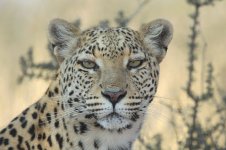Looking into visiting Namibia after the new year, as an extention of an independent South Africa trip. We'd hope to include crossing into northern Botswana. I've Just seen a great trip report by Richard Rae who covered many sites in December 2004, all with a hired 2WD vehicle.
Anyone know if this is still likely to be possible, and if so more difficult in Jan through Feb weatherwise?
Any links to more recent reports involving 2WD, or any other advice greatly appreciated, eg would it be actually easier to access northern Botswana from SA somehow?
PS. cost the biggest issue, ie. camping and no guides whenever possible.
PPS. Richard's report mentions the need for an international driving license to hire a car. Is this still the case?
cheers,
Larry
Hi, Larry,
A few comments for your consideration
re your proposed trip:
A trip such as you suggest has to be planned with safety and practicality in mind......
1: I would recommend, if possible, using 2 vehicles. It is important to have a back-up, because you may find yourself in formidable territory, with no commmunication available. Cellphone coverage is not universal in some of these areas.
2: Namibian roads, while well-maintained, are often dirt roads, which will have, inevitably, sharp stones on occasion. I did a Namibian trip in a VW Kombi with 5 other participants. We took two spare wheels, which was just as well, because we comprehensively blew two of our tyres. I'm not talking puncture here - this was total destruction of the tyre. With six up, plus luggage, plus water - essential for such trips - plus spare fuel, added to the weight of the rear engine, the tyre walls of the rear tyres inevitably bulged out. Should your tyre wall pass over one of those sharp stones the result is instantaneous...you have an ex-tyre. The nearest spares may be hundreds of kms away, and even when (or if) you get there they may not have the tyres you require. That said, Namibian dirt roads, as dirt roads go, are good, and probably less liable to rain damage than Botswana roads.
3: Botswana roads, especially in northern Botswana. are often deep sand. On such roads a 4x4 is virtually essential. You also need high clearance, because the beaten-down tyre tracks resulting from vehicle passage are separated by a raised ridge of pristine sand which is often beyond the clearance of most 2x4's. Another argument for back-up - on one Botswana trip we were forced to move off the "beaten tracks" on the road to allow a convoy of heavy trucks coming from the opposite direction to pass us. Once off the beaten-down sand we broke through the the fragile crust and bogged down. That was OK, in that we could have extricated ourselves, but the vehicles's fuel tank had been crushed against that central ridge, and sprung a leak along one of the seams. Our diesel was now spraying out over the sand, forcing us to back-track to a public camping area at Savuti where we had to stay overnight until our steel glue dried. Fortunately we had been carrying spare fuel, for filling stations are, in many areas of northern Botswana, just not available.
4. Botswana operates a high-cost, low-volume tourism policy in its pristine northern areas. This is done by permitting access in most cases only to expensive operations where you will be guided and kept safe in what is, bottom line, dangerous territory. One reason is to minimise potentially harmful tourism impact on those special areas, but another is that any freelancer who gets into trouble is on his or her own - there are no facilities which could help you in such situations. While unlikely, the risks are real: breakdown, bogged down, lost, snakes or scorpions, and even wild animals.....encounters with wild animals which have had undesirable outcomes, while uncommon, include elephant, hippo, buffalo, lion and crocodile, to name but a few. Unlike UK, if you go into the bush of your own volition and something eats you, there's nobody you can sue - you're on your own, and will have to take responsibility for your actions. Most freelancers, therefore, are experienced, well-equipped off-roaders with considerable bush experience. Just as an example, it is unwise to take oranges into elephant areas. Elephants love them, and will do what it takes to steal them from you. Although there are public camping facilities in Botswana, they will not necessarily be well maintained, so even there you should aim for self-sufficiency as much as possible. And be aware that such campsites are unfenced - you may find yourself sharing space with virtually anything wild that lives out there. Adds a certain
je ne sais quoi to proceedings, take it from me!
5: I have no wish to rain on your parade, and if you are indeed a rugged bush-rat with years of experience in the African bush I apologise. But if you are inexperienced, it is only wise to take sensible precautions.
I have appended the URL of a Southern African travel publication which specialises in low-cost travel including camping, 4x4 expeditions, and low-cost bush experiences. I suggest that you contact them for ideas for routes, accommodation etc.
6:
Re international driving licences.....some hire operators, if your current valid licence has a photograph, may not require them - but you will be in unsophisticated areas where you would not wish to fall foul of the law, which may look askance on a foreign licence. I always use one when travelling - they're easy to get, last for a year, and may keep you out of trouble.
7: Weather - Jan & Feb are smack damn in the rainy season. You certainly wouldn't want a 2x4 in Bostwana mud. These are not good months if you wish to stay dry.
Let us know what you decide. Whatever it is, it will be the adventure of a lifetime.
Best wishes,
Dave
http://www.gomag.co.za/contact_us




